1991
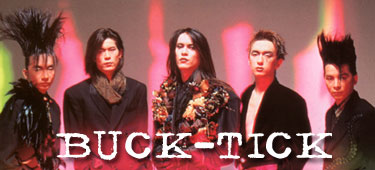
A new year, a new album and tour. This is the hectic pace of a hard-working band, though they are slowing down a little bit. In total this year, they will have played less live shows than they did the year prior, but not that many less. The first single off the new album was called "Speed" and released on January 21. The song's lyrics were written by Atsushi and the music by Hisashi. The original title of the single was "Acid" but the band felt it was too "yabai" (risky) since Hisashi was arrested for the drug just two years prior. Within the lyrics, there is a censored word as well which is written as 'XXXX' in the lyrics and backmasked on the recording (played backwards). The word is "jouzai", which means tablet or pill. Funny enough, the backmasking makes it sound like "ii ashido" (good acid). The B-side was "Narcissus", with lyrics by Atsushi and music by Hide. This makes the "Speed" single the first single to have a song by both songwriting teams. The Higuchi brothers have both contributed to writing lyrics but it seems to be a fluke in their history.
To promote the new material, Buck-Tick performed "Speed" on the Asahi television show "Music Station" on February 1. During the interview portion of their appearance, the discussion was the part-time jobs the members have held. When they performed "Speed", during the 'XXXX' portion of the lyrics, Atsushi may have mouthed the word "kokain" (cocaine) to the camera. At least, that's what some fans strongly believed at the time. Since then he has sang the censored word in concerts and when you rewatch that moment on "Music Station", his mouth formation appears to me at least to be the censored word, "jouzai" (tablet or pill).

On February 21, the new album Kurutta Taiyo was released and saw Hisashi embrace more experimentation with sound by using MIDI and again bowing the guitar but there was also electric cello that really enhanced that sort of sound. On the album, Atsushi's vocals were noticeably lower in range than previous new-wave-ish efforts. This album featured songs whose titles were written in katakana instead of English for the first time, ("Speed" and "Angel Fish"). With the album, Atsushi wanted to create a requiem for his recently departed mother. This album was also the first time the band worked with engineer Hitoshi Hiruma, who I would argue has defined the band's sound. They trust him a lot to help bring to life the sound they are envisioning. They have gone on to work with him many, many times over the years.

Kurutta Taiyo was the first Buck-Tick album to not contain a title track as well as the first album to release multiple singles. Subsequent singles were: "MAD" on June 5 and "Jupiter" on October 30. "MAD" also released as a video single; both the single and video were coupled with a re-recorded version of "Angelic Conversation." This would be the second time they re-recorded a song for a B-side, though the first time that the song was previously released on a major label. "MAD" has lyrics and music written by Hisashi. This is the second single that Hisashi wrote completely but it's the first major label single. Incidentally, "MAD" doesn't stand for anything and titles in Japanese releases may have non-standard usage of capital letters that I usually do not honor. But for some reason, I am compelled to always type "MAD" in all capital letters. In the song, Atsushi sings in Japanese that he was crazy so it means mad in that sense rather than angry. Hisashi once was bored in his hotel room and sort of added meaning to "MAD" by writing "Monster Attack Dynamite" on his guitar. "Jupiter" has lyrics written by Atsushi and music written by Hide. It is Hide's first single. The B-side was "Sakura," which is also available on the album.

Throughout the month of February but mostly during the first part of the month, there were a series of "Buck-Tick Special" video concerts AKA "Captagon Vol. 45". The Captagon company held these video concerts for various bands and Buck-Tick was the main band for this edition. Vol. 45 featured footage of Buck-Tick recording the new album as well as footage of their December 1990 concerts at Nippon Budokan.

On February 24, there was an event called Satellite Circuit. Buck-Tick recorded a concert in full (no one was in the audience) and one could view this by paying to watching it on the cable television channel JSB (Nippon Eisei Housou AKA Japan Satellite Broadcasting) now known only as Wowow). Cable tv in Japan was still fledging at the time and I believe this was the first pay type channel. They performed at Shimizu Octo's Chiba Studio, which was a newly built (1990) studio for the staging and rehearsal of large events and concerts. Looking back, it appears that Buck-Tick's performance was part of the pre-launch content as JSB/Wowow would officially launch on April 1. It was also possible to view the Satellite Circuit concert as a simultaneous broadcast at 15 various venues across the country if you were one of the 10,000 lucky people who won an invitation card to view this. During the performance of "Speed", for the 'XXXX' part of the lyrics, Atsushi turns away and you can just make out that he sings "jouzai". It must've been strange to be playing for no audience and still talk between songs as if there's an audience. Which is why at one point Atsushi said he wasn't sure who he's talking to.

The "Kurutta Taiyo Tour" began on March 6 with a fan club only gig in Kanagawa. The entrance ticket to the event resembled a backstage pass. This kind of concert ticket where a photo is printed or the artwork is a key feature and meant to be a keepsake is often called a memorial ticket in Japan. The tour lasted for 49 dates, ending on June 29 in Gunma. The band once again tried to play locations they had not played at previously and played for the first time in Fukui and Wakayama. In the middle of the tour, they played at the Port Sounds Festival on May 17-18 at Ariake Coliseum. Other places they played for two days in a row were Fukuoka, Ibaraki, Tochigi, Nagoya, Sapporo, Sendai, Niigata, Osaka, and Takasaki. This may be the tour with the most multiple shows. This is also the tour where Hisashi wore the notorious cat suit.
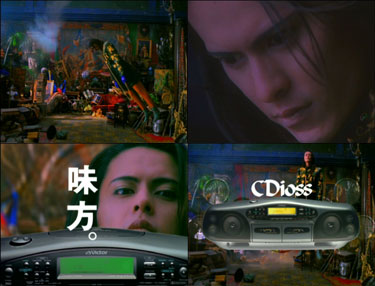
Just as Buck-Tick had endorsed CDian, the portable stereo by Victor/JVC in 1988, so did Atsushi in 1991. He endorsed the 7-speaker CDioss and was featured in commercials and print ads. There were two versions sold and each had a CD player, two cassette players, and a remote control. The RC-B1 model sold for ¥49,800. The RC-X770 model sold for ¥59,800 and had a different shape but I'm not sure of all the differences in the features. For example, both were advertised as being able to play both regular size CDs and the smaller 8cm used for CD singles in Japan at the time. The RC-X770 could also be used for karaoke discs and to be portable required only 3 AA batteries (Japan size 3), which is a huge improvement over CDioss. The RC-B1 model was like CDioss in that to be portable it required 3 AA batteries (Japan size 3) and 8 D batteries (Japan size 1). Both also had a power cord so that batteries were not required. The song used was "Jupiter" and Atsushi felt it was a shame they used that song as it's so heavy. He was even a little embarrassed about it. This time he wasn't holding the stereo in the commercial, perhaps because although it is portable, it's design seems more to be carry it from room to room rather than ghetto blaster style, but that's just my own personal opinion. The product slogan did not feel as dynamic or specifically written for Atsushi. The two slogans were "Sugao" ("naked face" or "true face") and "Mikata" ("friend" or "supporter"). CDioss had previously been endorsed by Lä-Ppisch in 1989 and Marchosias Vamp in 1990. Screenshots from the commercial are above and the print ads are below.

Around this time Atsushi changed the kanji of his last name and began using the old version of "sakura". (Personally, it took me a looong time to get used to it.) Comment: it's unlikely that Atsushi legally changed his kanji as it's a hard thing to do in Japan. Unless per chance his entire family changed kanji, unusual but not setting a precedent. (My own family has been through this so I know it has been done but again, highly uncommon.) Lyrically, there was a change in Atsushi too. He began to use less English and focus on Japanese. To this day he uses a minimum of English. I believe that changing his kanji was part of his maturing, if you will. His lyrics are almost poetry now. They are very beautiful and sometimes the meanings are so complex that I can not even begin to translate them. These changes could have occurred in Atsushi because his mother died the previous year, he married the band's stylist, and had a child with her. (They divorced about 1 year later after an affair was publicized.)
I am not sure of the exact date that Buck-Tick appeared on "5ji Sat Magazine" but they were promoting the new album and the Satellite Circuit show so I think it may have been as late as mid-February. The whole band was sitting at a long kotatsu, a common piece of Japanese furniture to stay warm in winter as there is a heater underneath and a blanket to keep the warmth in. (During warmer months when the heat is not turned on, the blanket is removed.) A couple months later Atsushi and U-ta appeared on the show and were promoting "MAD" so it was probably in early June. On June 10, Atsushi appeared on the radio show "All Night Nippon" hosted by Kenji Ootsuki, singer of the band Kinniku Shojo Tai.
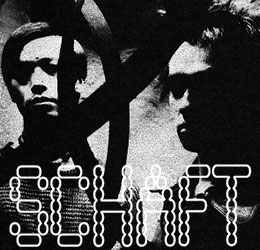 On October 21, an album of various artists entitled Dance 2 Noise 001 was released. It featured Hide doing a solo song, "Jarring Voice", where he sings but the vocals are distorted. The album also featured Hisashi in a side project called Schaft with Maki Fujii (Soft Ballet) and their song was called "Nicht-Titel" (No Title). There was also a Dance 2 Noise 001 concert on December 16 at Club Yellow in Nishi Azabu, Tokyo. Schaft performed a 25 minute industrial set comprising of "Nicht-Titel" and one other song. Other bands at the event were Hamlet Machine, PC-8, and The Apollo's. The Apollo's, incidentally, did not appear on the compilation album. (Hamlet Machine was fronted by Issay of Der Zibet and unlike Schaft, this was not their first live gig.)
On October 21, an album of various artists entitled Dance 2 Noise 001 was released. It featured Hide doing a solo song, "Jarring Voice", where he sings but the vocals are distorted. The album also featured Hisashi in a side project called Schaft with Maki Fujii (Soft Ballet) and their song was called "Nicht-Titel" (No Title). There was also a Dance 2 Noise 001 concert on December 16 at Club Yellow in Nishi Azabu, Tokyo. Schaft performed a 25 minute industrial set comprising of "Nicht-Titel" and one other song. Other bands at the event were Hamlet Machine, PC-8, and The Apollo's. The Apollo's, incidentally, did not appear on the compilation album. (Hamlet Machine was fronted by Issay of Der Zibet and unlike Schaft, this was not their first live gig.)
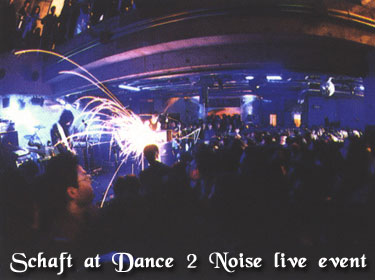
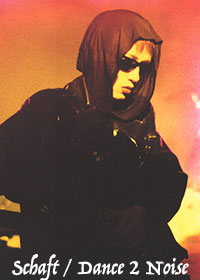
Also on October 21, Der Zibet released Shishunki II. Hisashi plays guitar on the track "4-D Vision No Rasen Kaidan". Atsushi provides guest vocals on the track "Masquerade".
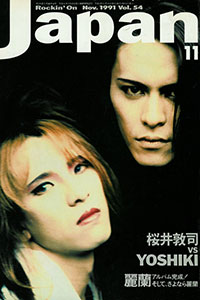 Continuing with the theme of Buck-Tick vs. X (Japan) from last year, the magazine "Rockin' On Japan" paired Atsushi with Yoshiki for the November issue, but this time put them on the cover instead of just inside the magazine. Arguably the pretty boy of both bands, this was quite the talk of the town. The inside imagery could also be called controversial as it could be interpreted that they were posing as lovers. At the time, both had long hair and could look quite feminine. Yoshiki would wear lace pants during this era and pearl necklaces. Given the poses, I interpret him as the bottom in this photoshoot. But perhaps the bigger issue is that Atsushi is dressed as a Nazi SS storm leader, (as a member of Hitler's bodyguards no less!), and this is not the only time he and the band has played with Nazi imagery. As a fan of punk music, it was easier when I was younger to accept this and justify it but as I get older, I am much less accepting of this. Buck-Tick members are old enough to know about Nazis and that this imagery is not to be taken lightly. It bothered me when fans started dressing like this at concerts and weren't making the connection whereas, right or wrong, punks did it knowingly to shock people.
Continuing with the theme of Buck-Tick vs. X (Japan) from last year, the magazine "Rockin' On Japan" paired Atsushi with Yoshiki for the November issue, but this time put them on the cover instead of just inside the magazine. Arguably the pretty boy of both bands, this was quite the talk of the town. The inside imagery could also be called controversial as it could be interpreted that they were posing as lovers. At the time, both had long hair and could look quite feminine. Yoshiki would wear lace pants during this era and pearl necklaces. Given the poses, I interpret him as the bottom in this photoshoot. But perhaps the bigger issue is that Atsushi is dressed as a Nazi SS storm leader, (as a member of Hitler's bodyguards no less!), and this is not the only time he and the band has played with Nazi imagery. As a fan of punk music, it was easier when I was younger to accept this and justify it but as I get older, I am much less accepting of this. Buck-Tick members are old enough to know about Nazis and that this imagery is not to be taken lightly. It bothered me when fans started dressing like this at concerts and weren't making the connection whereas, right or wrong, punks did it knowingly to shock people.
If one could divide Buck-Tick into two separate eras, I would have to pick the album Kurutta Taiyo as the ending of the first era. The album after that, Koroshi No Shirabe ~This is NOT Greatest Hits~, released the following year in 1992, is the fuzzy gray line that divides the eras. The band definitely took a darker turn with Taboo and Aku No Hana, but I would argue that Buck-Tick's sound and image definitely underwent a metamorphosis with and since 1991/2. Until then, Buck-Tick had been more of a pop band but in those two albums there was the beginning of a seriousness in the lyrics (by focusing on writing in Japanese instead of trying to be cool by cramming in as much English as possible) and more of a Western approach to distortion rock while retaining their alternative and European influences. As different as they are, the albums released after Koroshi No Shirabe still contain a certain sensibility that makes it undeniably Buck-Tick. This would also be around the end of the peak of Buck-Tick's popularity and record sales. The fans would remain faithful but the Japanese scene can be particularly fickle and this was experienced in the 1990s; the music business started to dwindle all around the world in the 2000s.

To get a glimpse of the band's evolution, I recommend the video compilation that was released on November 21 entitled Buck-Tick. It contains all the promotional music videos at the time. Yes, even before they were releasing singles, Buck-Tick were making videos to promote their music that would air on television even though there was not a television station dedicated to music promotion. MTV Japan would not start until 1993.
On November 27, the band began playing 3 shows at various Club Quattros in the country and the shows were simply entitled Club Quattro Buck-Tick.
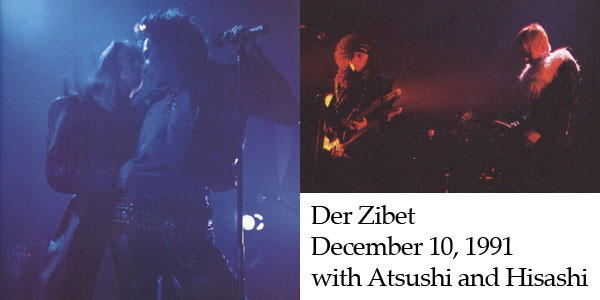
On December 10, Atsushi and Hisashi made a guest appearance at Der Zibet's concert at the Kudan Kaikan in Tokyo. Both of them played on the sang song they participated on for Der Zibet's album. Hisashi came out to play guitar during "4-D Vision No Rasen Kaidan" and Atsushi joined Issay in a duet for the song "Masquerade." The sexual tension was quite strong when Atsushi and Issay ground their hips.
On December 13, the band performed "Jupiter" on the television show "Music Station". "Music Station" regularly interviews the artists before their performance and this particular one seemed to be lacking microphones for all members so it was a slightly humorous moment when Atsushi's arm was tired of holding the microphone for U-ta to talk or when Toll dropped the mic on U-ta. The discussion was about Christmas and whether the members believed in Santa Claus as children. This appearance is a great example of how Hisashi doesn't pay attention in interviews. Also, the co-host was being playful when he remarked that Hisashi had graffiti on his face but Hisashi looked a little uncomfortable and perhaps even insulted in my opinion.

At the end of the year, the Nihon Record Taisho awards were held as they usually are on December 31. Buck-Tick were among the groups who received the Album Excellence award for Kurutta Taiyo. Previously Buck-Tick received an award for best newcomer in 1988. They have not received any Record Taisho awards since 1991.
Continuing the count of prefectures played, this year the band played these prefectures for the first time: Fukui and Wakayama.